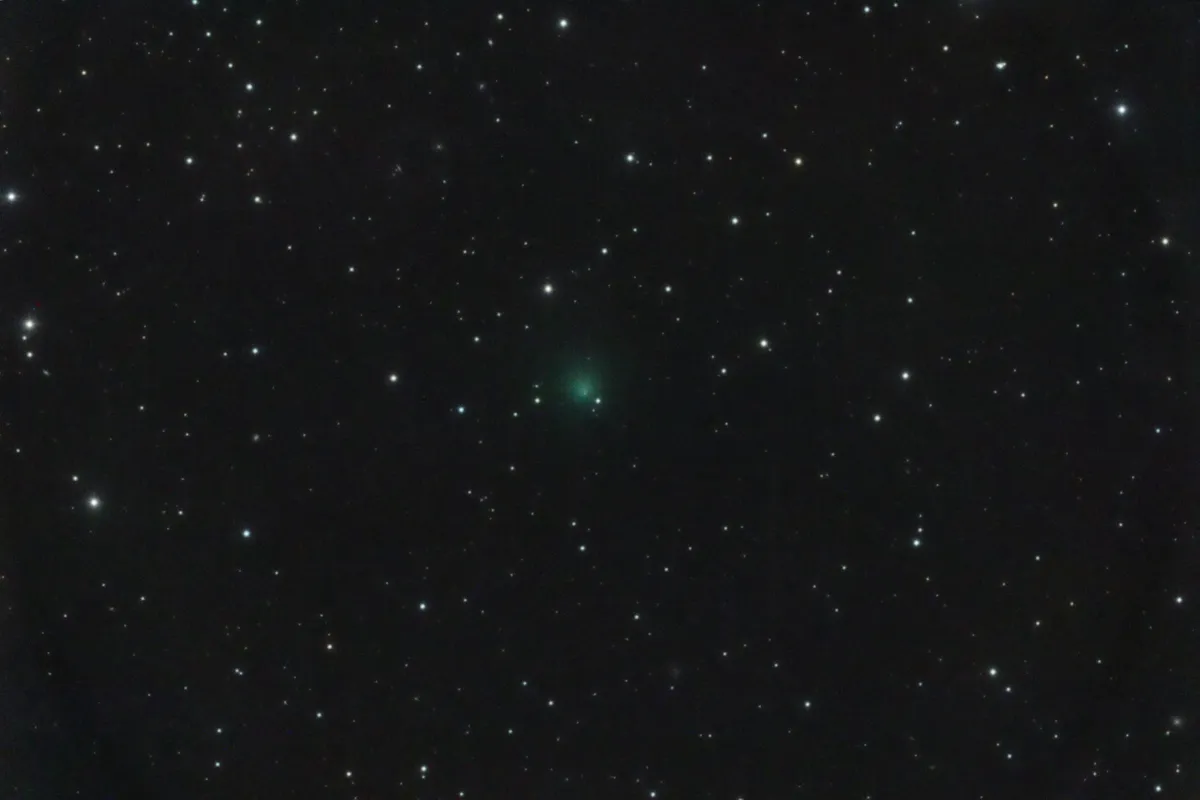As skywatchers and amateur astronomers wait to see if comet C/2023 A3 (Tsuchinshan–ATLAS) lives up to its promise of becoming a bright naked-eye object, let's take a look at what long-period comets are, where they come from and why they're so fascinating.
Comets are among the smallest members of our Sun’s family and there are lots of them out there.
If you set an astronomy app to ‘Show all comets’, your screen will fill with so many dots you won’t be able to see the stars!
Find out what comets and asteroids are in the sky tonight. Discover the greatest comets of recent times.

People used to be very afraid of comets.
They thought comets were harbingers of doom, terrifying cosmic visitors that carried terrible disease, caused calamities like floods, earthquakes and plagues and even heralded the deaths of rulers when they appeared in the sky.
Today we know that comets are huge, dark, dirty, dusty bodies – a cross between icebergs and snowballs.
For most of their existence we can’t see them, because most lurk out in the Oort cloud, many thousands of times further from the Sun than Earth, and never leave it.

Comets orbiting the Sun and brightening
Occasionally, a comet is nudged out of the Oort cloud to travel in toward the Sun.
If it comes close enough to thaw out, it can release huge amounts of glowing gas and reflective dust.
This can brighten the comet to the point it becomes visible through telescopes and sometimes to the naked eye.
Comets orbit the Sun like the planets do, except their orbits are usually much more elliptical than the roughly circular orbits of the planets.
Some comets take a long time, others only a very short time – astronomically speaking – to orbit the Sun.
Short period comets

Comets that take less than 200 years to orbit the Sun are classified as short-period comets.
Comet 2P/Encke has the shortest period (or year), taking just 3.3 Earth years to complete one orbit of the Sun.
But the most famous short-period comet is Halley’s Comet, which takes 76 Earth years to orbit the Sun.
Unlike most comets traditionally named after their discoverer(s), this was named after the astronomer Edmond Halley.
In 1705, Halley’s calculations suggested that the comet had appeared in our sky at regular intervals through history and would reappear again in 1758.
It did, but unfortunately Halley died before then, so never got to see the comet that bears his name.
Long-period comets

Other comets take much longer to orbit the Sun and these long-period comets tend to be the brightest and most active.
This is because they don’t thaw out so often, so they are still relatively fresh each time they come close to the Sun and release more material.
The most famous long-period comet is Hale–Bopp, which was a beautiful sight in our sky in 1997.
Hale–Bopp takes around 2,530 years to go around the Sun. That’s a long time, but other comets take much longer.
Comet Hyakutake, which appeared in our sky a year before Hale–Bopp, has an orbital period of around 70,000 years, while the great comet of 1976, Comet West, has an orbital period of about 250,000 years.
So don’t hold your breath waiting to see that one again!

And what about comet C/2023 A3 (Tsuchinshan–ATLAS), expected to hove into view in October 2024? How long is its orbit?
We think it’s making its first visit to the inner Solar System after leaving the Oort cloud, possibly millions of years ago.
That’s why it’s so exciting – it’s a dynamically new, ‘fresh’ comet. We don’t know what it’s going to do!
If you're a comet observer or photographer, send us you images and adventures by emailing contactus@skyatnightmagazine
